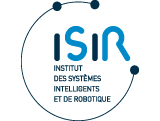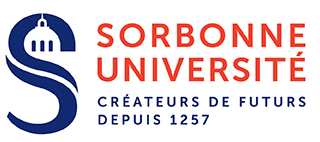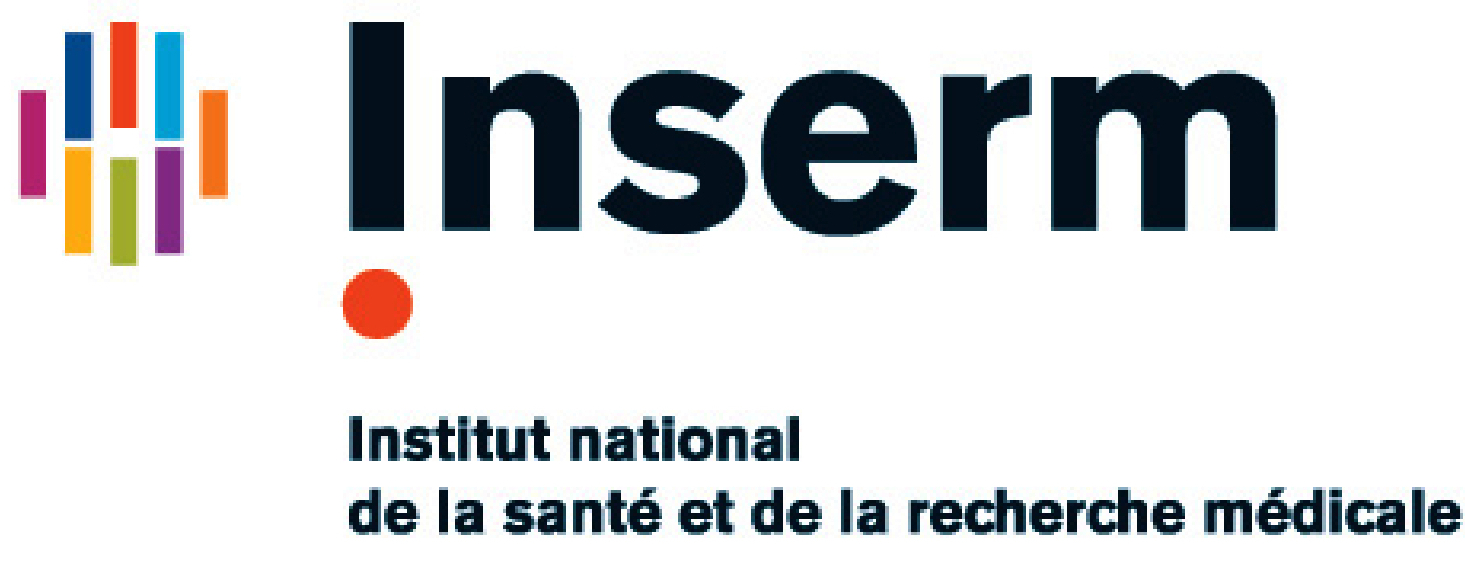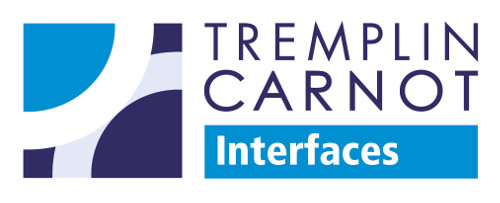A voir également
- Profil
- Publications -----------------------------
- Research Log
- Literature Review
- Calendar
Research Log

Titre : Doctorant.e
Ne fait plus partie de l'unité
July 2015
- We've submitted a journal paper in PRL.
April-June 2015
- The recent results have been accepted at AVSS 2015.
- Working towards the finalization of thesis draft.
- Thesis has been sent to the reviewers. (Prof. Roland Chapuis, Dr. Francois Bremond)
March 2015
- Mission: writing :).
- Primitive experiments completed on two datasets, 1 more in the loop.
- Cylindrical dimensions to be introduced in addition with VISAPP 2015 paper.
February 2015
- Experiments successfully completed on two other datasets.
- Geometric primitives introduced, experiments in progress.
January 2015
- Dataset selection and ground truth preparation in progress.
- Problems with calibration data faced, but resolved.
- Experiments on few technical details of the cluster.
December 2014
- Utilization of PETS 2006 for the experiments. Generation of Ground Truth.
- Discussion and selection of another dataset such as PETS 2007 or Sports Players Dataset (but it is not public?).
- Meeting with thesis directors (algorithm, thesis writing).
- Working on a mobility grant.
- Vacations for a short time :)
October & November 2014
- Experiments performed on the EPFL terrace sequence.
- Exploration of several background techniques in relation to EPFL terrace sequence.
- Exploration of several planar heights.
- Study of the relevant papers such as Carr ECCV 2012 and Kiss PRL 2013.
- Exploration of the ground features of Utasi TSCVT 2013 on EPFL terrace sequence.
- Won the best paper runner-up award at ICDSC.
September 2014
- Verify the algorithm on other dataset(s) – modifying the codes!
- Laboratory/Institute level meeting: 11/09/2014.
- PhD meeting with the directors to summarize the 2nd year and discuss the 3rd last: Morning, 25/09/2014. Preparation of presentation.
August 2014
- Introduction of the unsupervised learning techniques, reduction of parameters including the generation of parametric curves.
- Writing workload!
July 2014
- I have a paper accepted in the Eighth ACM/IEEE International Conference on Distributed Smart Cameras.
-
I will be attending
the tutorial arranged at Prof. Adrien Bartoli's research group in Clermont-Ferrand(updated: unfortunate funding constraints :'( ) and the PAVIS summer school at the end of September. - We have further improvements on the TER and we are able to do so without increasing the bounding box (comparison with Dr. Akos Utasi's papers). After the improvements, current workload is more on the paper writing strategy.
- From the implementation part, there are experiments running on the cluster to do some offline processing. However, the cluster resources seem limited this month, how to manage?
June 2014
- Found time to finally get the codes transferred to the cluster, many many MATLAB licensing issues but we finally sorted them out.
- and, yes, I was on vacations in June?
May 2014
- The module for extracting the position of the high probability locations have been improved. The pattern recognition method when applies to this provides notable improvements.
- The method has been submitted for review in a conference.
- Further work on the improvements of the localization (calibration, annotations) and also to join the two modules (high probability locations, and the pattern recognition) as a global optimization (if possible).
April 2014
- The centroid position improvement has been implemented and verified with the Utasi evaluators.
-
The pattern based method has been implemented on the top of the improved centroids and experiments are being performed in order to see the evaluation performances.
- What to do of the AOI borders, the definition of Utasi can be suited to our purpose? (answer: yes)
- Aperture effect due to the AOI? (account for)
March 2014
- I am trying to initiate the experiments on EPFL.
- Brain-stormed plans: (a) repeat the experiments on EPFL (b) can we take into account another view of PETS 2009? Maybe replacing view 3? (c) improve the centroid based region segmentation? (d) study the effects of planes on the ghosts.
-
Further updates:
- EPFL backgrounds seem different from the one of Akos Utasi, so waiting for updates from Akos Utasi.
- PETS 2009 views selected are the most appropriate one because the 4th view, as said by the dataset website: “In particular View 4 suffers from frame rate instability and we suggest it be used as a supplementary source of information”.
- Yes, we worked on the centroid based improvements.
- The ghosts are cumulative effect of the planar selections as well as the background subtraction area.
February 2014
- A 3D structure like that presented as surf plot visualization (Shah's 2009 paper) won't be of help either. The height information remains the same, thus 3D isn't always helpful (maybe for better visualization) and as the direction of ghosts is not always known, therefore it can't help. However, interestingly, the other axis present (excluding height one) present interesting gaussian shapes! (Too bad ghosts produce them too)
- A change in the number of planes at the top (like of Utasi) won't make sense as many of the people are less than 190cms.
- Indeed, our ROC optimizations were too specific to FDR and didn't take into account MDR, hence the difficulties overall.
- Transform ROC curve results into other evaluation measures (TER, FDR, MDR, MIR). ROC curve might have optimized too much for FDR?
January 2014
- I have been working on the method proposed by Catherine (centroids method) with a suggested detection stage modification by Sebastien (skelroids method, basically we make the initial detections using morphological operations). There is a clear improvement in the ROC curves with skelroids. However, many questions remain (see the last pages of centroid method file). I have uploaded a detailed summary of the results and some code guidelines for both.
- Results of the centroids method: here.
- Results of the skelroids method: here.
December 2013
- Vacations!
November 2013
- ROC curves like these are obtained.
- For fundamental shapes: Results are suffering from projection inefficiencies at backprojection stage. Plans to remove this, how? The results of correlation without them are not encouraging (tried several measures of correlation).
- Working on a shape based technique in order to perform detection from the three views as used by Utasi. Questions to answer remain: (a) what is the fundamental shape? (b) which shape extraction and/or features?
September, October 2013
- We have been accepted at VISAPP 2014. The poster is available here, which may serve as a log replacement for these months.
Summer 2013 (July, August)
- Ghost pruning on PETS 2009 is in progress. The geometric based methods seem to be progressively improving the results.
- But, false negatives have to be accounted for, how? including the occlusions across the optical axis?
- I delievered a talk in Ecole des Mines, Douai, accessible here.
June 2013
- Currently studying on how to deal with the ghost pruning?
- Akos Utasi's methods studied and implementations made. In depth understanding of the multi-plane projection for PETS dataset.
- Updates and probably a full resolution on the Shah's multi-plane projection.
- Administrative: Yearly report due this month!
May 2013
- Further updates in this monthly presentation: click here.
- Found interesting alternative paper on multiplane homography, ghost suppression, and a recent IEEE transaction with code availability on probability based multi-camera detection. I am going to have a look at all of these, with on item working on the short-time goal within 6 weeks. This was the result of quick citation review of Shah's paper, and maybe I need to have a detailed review of papers, or maybe these papers identified, are enough?
- Affine homography indeed was the thing which I was overlooking, now there is a problem of stitching, or maybe I need to apply the synergetic framework directly?
April 2013
- There are some positive updates on multiple plane homography with Shah's dataset. I have to confirm the results with my supervisors. The results aren't 100% but seem enough for me to move to background subtraction. Moreover, we have to see if the results can be extended to PETS dataset as the available information is purely projective, not affine.
- The internal presentation for IFSTTAR: here.
- The presentation delivered to Catherine: here. There are various elements which I plan to show separately, and are not uploaded.
- Implemented the equation of Shah for extracting homographies parallel to the ground plane. However, the results are not encouraging. It works up to half way through, but breaks up after that. The results are even more discouraging for the EPFL dataset where we have real ground plane and top plane homographies. Analysis show that the equation only modifies the third row of the original homography matrix, which is not the case when retrieved from real calibration, therefore, detailed analysis has to be performed on this. Nevertheless, the extraction of vanishing point in normal is very vaguely defined in the paper, so maybe this is a pointer?
- Homographies for ground plane have been successfully calculated on Shah’s sequences. For other sequences, like EPFL and PETS 2009, it shouldn’t be as big of an issue as calibration data is available, just that for PETS 2009 the calibration model is TSAI, so study has to be done to appropriately extract ground plane homographies out of it.
March 2013
- For the last 2 weeks of March, I have to make a module which is able to produce homographies on all views of Shah's parking lot sequence. A rough outline of it, and how we decided it, is here.
- Many many problems with homography. It is still in working! but, seems like I have to do things manually for the beginning and be done with RANSAC. Shah's paper is not giving details of how they automatically compute the correspondences for ground plane homographies and the dataset they gave has no calibration or nothing available.
- Read Fleuret's TPAMI 2008 and an extensive citation review of these papers, and the datasets used. Updated in the literature review section. While reading the citations, there are three interesting pieces I want to go through in this month or next: Gavrila's DAGM 2010 or 2011's literature review table (just 1 page), Xiaogang Wang's literature review of PRL 2012, and a report of Bonifacio of his work with INSA/BoschGMBH (maybe only the literature review, but is an easier to read alternative as I think he is implementing Shah's TPAMI 2009 approach at least for some parts).
- Collecting various datasets. I have now 12 multi-camera datasets (maybe not all of them are overlapping) spanning upto 80GB including the most important ones such as Shah's Parking lot sequence (not public), SPECTRE (not public anymore), and EPFL datasets, not to forget PETS. I believe these are the most important datasets to see.
February 2013
- Basically, this month I have collected some codes on the detection module, and the trajectory modules, and I have also extensively collected many multi-camera datasets (as I am updating this on 15/03, so I shall provide a detail in the March month).
- There are some codes available for global optimisation techniques such as of Laura Leal-Taixé CVPR 2012 and interesting works of Anton Andriyenko at TUD. However, this should be the later part. Then there are also codes of EPFL of POM and k-shortest paths.
- Code survey of many detectors and their binaries was carried out. I checked them out on various datasets, including but not limitng to BOSS, some of PETS sequence and a level crossing sequence which Sebastien wanted to try on. FPDW is qualitatively speaking good, and the limitations were as expected, however we don't need to rely on detector so much, so it's probably OK but there is no training code availale so that's a limitation. DetectorPLS (training code available), and Parts based Model (training code available) were also tried. They worked as expected to the literature review paper of Dollar's TPAMI 2011. Sebastien also worked with one coe of Jianxin Wu's ICRA 2011, apparently it was fast too, but I haven't checked it myself. Basically, we don't need very strong detectors. Hence, this much in our coding library should probably do?
- Finished understanding Shah's two paper in this month.
- Catherine has asked me to check results of OpenCV implementations of HOG and homography on PETS 2009 dataset for tracking. If possible, we shall also try to check the part-based detection methods.
January 2013
- I delivered a presentation to my supervisors, it can be viewed here.






